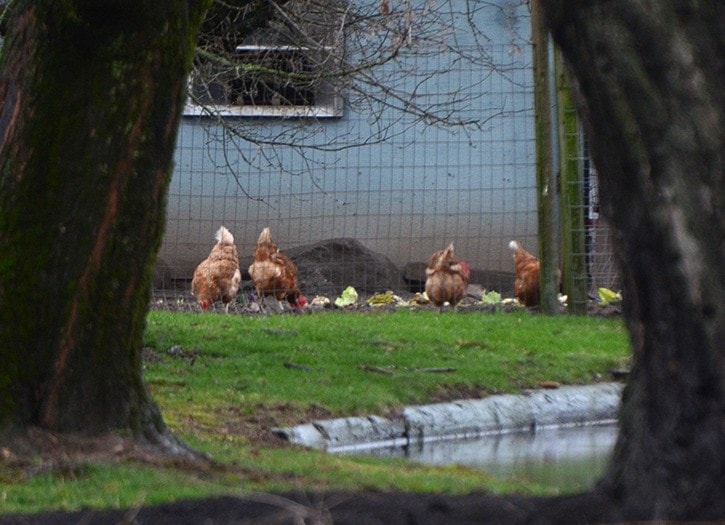Fifty-one days after the last reported case of avian influenza was detected in the Fraser Valley, the virus has hit a hobby farm in Chilliwack.
The Canadian Food Inspection Agency (CFIA) confirmed a highly pathogenic H5N1 avian influenza virus was detected on Feb. 2 at a non-commercial operation with 95 table egg- layers.
This is the first time the H5N1 strain has been detected in the current outbreak, which began Dec. 1 in Chilliwack when 13,000 chickens had to be culled at a Greendale broiler breeder.
From there it spread to a number of farms in Abbotsford then on to Langley with the last confirmed commercial case at a commercial farm on Dec. 17 where 11,800 chickens had to be euthanized.
The total number of affected birds as of the new year was 245,600.
The last case detected before last week’s was on Dec. 19 at another non-commercial operation in Aldergrove with 85 ducks, chickens, geese and turkeys.
Since the detection of bird flu at a Prairie Central Road property there has been chatter in the backyard chicken community in B.C. about terminology the media has used.
“A backyard chicken coop in British Columbia’s Fraser Valley has been infected with avian influenza,” is how the CBC reported the Feb. 2 detection.
“By using the title ‘backyard coop,’ they are insinuating that it is small and close to Vancouver, not on a farm out near Chilliwack, almost an hour away from Vancouver,” said Catherine Petronella Wood who started a new Facebook group BC Backyard Poultry Growers.
Nicholette Devenney administers another Facebook group, “Support for Backyard Chickens in Chilliwack.”
“These are not commercial farms . . . nor are they what we would consider to be backyard chickens,” Devenney said on Facebook. “Maybe what we should be advocating are urban hens. The difference is numbers. The purpose of urban hens are to have enough chickens to provide your family with eggs. No more.”
Devenney came to city hall’s Agricultural Advisory Committee (AAC) a year ago to push for allowing backyard chickens in the city. Then in June, city council voted, with only Coun. Jason Lum opposed, to reject the idea of allowing urban hens in residential areas.
At that time Mayor Sharon Gaetz pointed to avian influenza as a reason to disallow the practice in the city’s suburban areas.
“The difficult part for the city [in 2004] was going to each home that had chickens and informing them that they would have to take their chickens and be destroyed,” she said.
But Devenney argues that using avian flu as an excuse to ban backyard chickens is backwards.
“Back when I gave the presentation to the city I discussed this very problem,” she told the Times this week. “That mutated viruses are coming from large overcrowded commercial operations. Unfortunately birds fly. And it can get transferred to backyard chickens. The problem originates at the commercial level. . . . The more birds you have the easier it is for viruses to mutate and spread.
“But as the CFIA indicates on their website, they don’t even look at backyard/urban hens because statistically speaking they don’t cause the problem.”
As for the current outbreak, the clock will now start over for the CFIA to declare the area free of avian flu. Disease control measures remain in place for 21 days after the cleaning and disinfection of all confirmed infected premises. Then strict surveillance will continue in the area for 90 days.
“This new infected premises reminds us that risks for new infections remain a concern,” a CFIA statement issued Saturday said. “It is important that all bird owners have good biosecurity measures in place to protect their flocks from infection.”
The CFIA continues to reiterate that avian influenza viruses do not pose food safety risk as long as poultry products are properly handled and cooked.
A U.S. biomedical researcher and avian flu expert, however, says the CFIA is downplaying the risk to humans.
Henry Niman says the spread of the current H5 strains are as a result of wild birds. And he says all three of the types of avian flu in North America (H5N1, H5N2, H5N8) have the potential to cause human disease.
“This risk to humans is being underplayed because no human cases have been reported to date from these versions, but the Asian H5N1 as well as H5N6 has caused fatal human cases,” he said this week.
